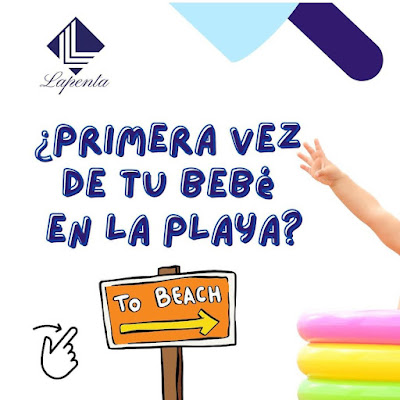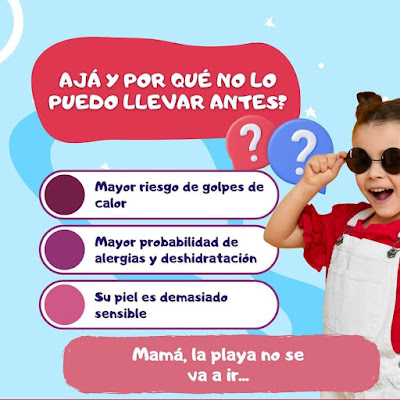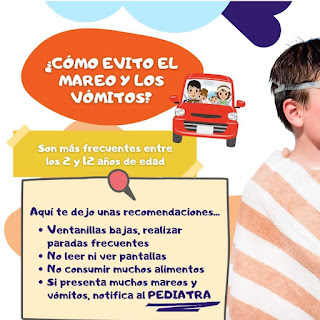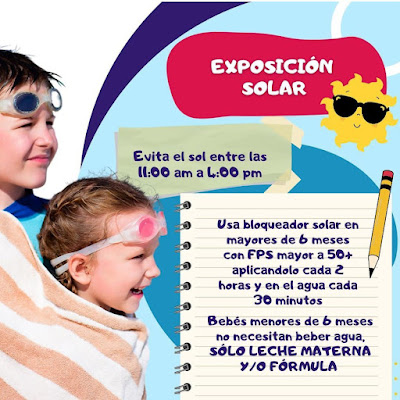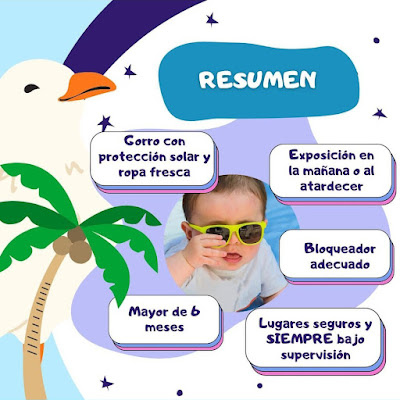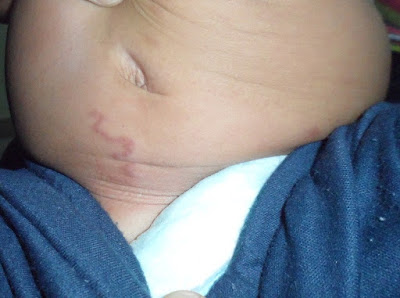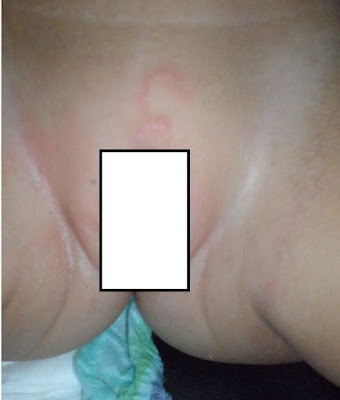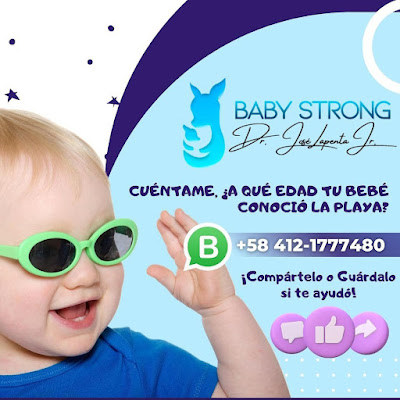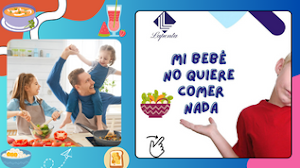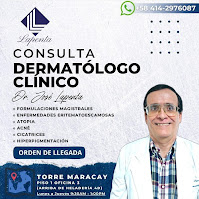PRIMERA VEZ QUE LOS NIÑOS
VAN A LA PLAYA
CHILDREN'S FIRST TIME
THEY GO TO THE BEACH
EDITORIAL ESPAÑOL
==================
Al llevar por primera vez a tu niño(a) a la playa debes tener en
cuenta los siguientes aspectos:
- El viaje a la misma puede ser corto o largo y hay que tratar o evitar
que el niño tenga crisis de ansiedad, y para ello es
bueno llevar objetos familiares como:
juguetes, muñecos, mantas.
- Cuando el viaje es por carretera, los bebés que están en
sus sillas, deberán hacer paradas frecuentes cada 35 - 45 minutos
para evitar la ASFIXIA POSTURAL. Todo niño
menor de 12 años o menor de 140 Cm
de altura debe sentarse en los asientos traseros y usar silla
adaptables según sea el caso
- Usa ropa que cubra la mayor parte del cuerpo,
colores claros, telas suaves y mosquiteros.
- Bebés menores de 6 meses NO NECESITAN BEBER AGUA,
bebés de mayores de 6 meses, puedes ofrecerle agua para
mantener la hidratación, leche materna o
fórmula según el caso
- No hay una medida MINIMA de edad establecida para
llevarlos a la playa, pero se recomienda un
mínimo de 6 meses de edad.
-Llevarlos antes te puede acarrear problemas
como:
1.) Mayor riesgo de GOLPES DE CALOR, pues
están en pleno aprendizaje de la regulación de
la temperatura corporal al ambiente.
2.) Mayor probabilidad de
alergias y deshidratación.
3.) La piel es demasiado sensible a tempranas edades:
picaduras de insectos, alergias, y
quemaduras solares, pueden complicarte el
paseo.
Consejos para evitar los vómitos y
mareos, los cuales por lo general son más frecuentes
entre los 2 y 12 años: ventanillas bajas, paradas
frecuentes, NO leer ni ver pantallas
(celulares, tabletas, portátiles).
NO consumir muchos alimentos, si la
carretera es sinuosa, puede
ocasionar vómitos. Si presenta muchos vómitos y mareos
consultar al PEDIATRA.
De hecho, hay niños, adolescentes e incluso
adultos, que cada vez que van a la playa por
carretera, sinuosas o no, presentan mareos y
vómitos como una constante, aun tomando
todas las medidas preventivas.
Con respecto a la EXPOSICIÓN SOLAR,
hay que evitar el sol entre 11.00 Am y 3-4 Pm,
llevaros temprano en la mañana o
después que comience a "bajar" el
sol.
Usar un BLOQUEADOR SOLAR factor 50, el
cual debe reaplicarse cada 2 horas y
dentro del agua cada 30 minutos, (por mas
que digan "a prueba de agua" se caen
rapido.
Protectores solares con factor de
PROTECCIÓN más de 50 es un comercio,
está estudiado y establecido que TODOS
los buenos
PROTECTORES SOLARES protegen solo hasta un
50%,
ni que digan 70, 90, 100 o 110.
Una vez terminado el baño de playa, colocarle un
buen hidratante en todo el cuerpo, y en las noches
si hay muchos insectos, el repelente NO SE LO
COLOCARAS directamente en la piel, se lo pones en
la ropa de dormir.
Recordar siempre: buena HIDRATACIÓN, buena
PROTECCIÓN SOLAR, y ROPA
ADECUADA,
Y no debe FALTAR EL BOTIQUÍN de
"EMERGENCIAS": alcohol (gel), protector
solar repelente antimosquitos, paracetamol o ibuprofeno,
suero oral, cremas hidratantes, con
antibióticos y asteroideas, algodón,
curitas, vendas, medicamentos de
enfermedades de base, o recetas con
nombres genéricos,
Un último consejo: NO DEBERÍAS COLOCAR el bebé
directamente sobre la ARENA, para jugar,
pues si la arena está contaminada
con CACA de perro o gato NO DESPARASITADO, puede
metérseles en la piel una LARVA
denominada LARVA MIGRANS, (click para ir a la
revisión,), igual te dejo dos
fotos.
EDITORIAL ENGLISH
One last piece of advice: YOU SHOULD NOT PLACE your baby directly on the SAND to play, because if the sand is contaminated with POOP from a UNWORMED dog or cat, a LARVAE called LARVA MIGRANS can get into their skin (click to go to the review). ,), I'll leave you two photos anyway.
==================
When taking your child to the beach for
the first time, you should take the
following aspects into account:
- The trip to it can be short or long and
you have to try or prevent the child from
having anxiety attacks, and for
this it is good to bring familiar objects
such as: toys, dolls, blankets.
- When the trip is by road, babies who are
in their seats must make frequent stops
every 35 - 45 minutes to avoid
POSTURAL ASPHYXIA. All children under 12 years of age or
under 140 cm in height must sit in the
rear seats and use an adaptable seat as
appropriate.
- Wear clothing that covers most of the
body, light colors, soft fabrics and
mosquito nets.
- Babies under 6 months
DO NOT NEED TO DRINK WATER,
babies over 6 months, you can offer water
to maintain hydration, breast milk or
formula as appropriate.
- There is no MINIMUM age measurement
established to take them to the beach, but
a
minimum of 6 months of age is
recommended.
-Taking them before can cause problems
such as:
1.) Greater risk of HEAT STRIKES,
since they are in the process of learning
how to regulate body temperature in the
environment.
2.) Increased
likelihood of allergies and dehydration.
3.) The skin is too sensitive at an early
age:
insect bites, allergies, and sunburn can
complicate your trip.
Tips to avoid vomiting and dizziness, which are generally more common between
the ages of 2 and 12: low windows,
frequent stops, DO NOT read or watch
screens (cell phones, tablets, laptops).
DO NOT consume a lot of food, if the road
is winding, it can cause
vomiting. If you experience a lot of
vomiting and dizziness, consult your
PEDIATRICIAN.
In fact, there are children, adolescents
and even adults, who every time they go to
the beach by road, winding or not,
experience dizziness and vomiting as a
constant, even when taking all preventive
measures.
Regarding SOLAR EXPOSURE, you must
avoid the sun between 11:00 am and 3-4 pm,
take it early in the morning or after the
sun begins to "go down."
Use a factor 50 SUNBLOCK, which
should be reapplied every 2 hours and in
water every 30 minutes, (even though they
say "waterproof" they fall off quickly.
Sunscreens with a
PROTECTION factor more than 50 is
"fake", it is studied and established that ALL
good SUNSCREEN protect only up to 50%, not
even 70, 90, 100 or 110.
Once you have finished the beach bath,
apply a good moisturizer all over your
body, and at night if there are many
insects,
DO NOT PUT the repellent directly on
your skin, you put it on your nightclothes.
Always remember:
good HYDRATION, good SUN PROTECTION,
and APPROPRIATE CLOTHING,
AND THE "EMERGENCY" KIT should not
be MISSING: alcohol (gel), anti-mosquito
repellent sunscreen, paracetamol or
ibuprofen, oral serum, moisturizing
creams, with antibiotics and steroids,
cotton, band-aids, bandages, medications
for underlying diseases, or prescriptions
with generic names,
One last piece of advice: YOU SHOULD NOT PLACE your baby directly on the SAND to play, because if the sand is contaminated with POOP from a UNWORMED dog or cat, a LARVAE called LARVA MIGRANS can get into their skin (click to go to the review). ,), I'll leave you two photos anyway.


